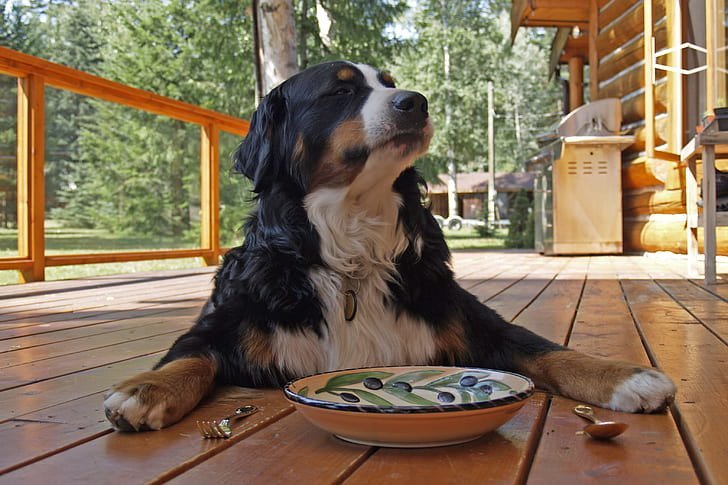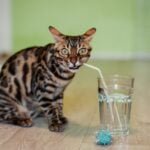Does your dog eat their food too quickly? It’s not good for them and can cause health problems like choking, bloating, and digestion issues. As a responsible pet owner, you should fix this problem. One way to do that is by using special bowls called slow-feeder dog bowls.
In this guide, we’ll talk about how to know if your dog eats too fast, why slow-feeder dog bowls are helpful, and which bowls are the best to buy. We’ll also give you easy tips to teach your dog to use these bowls. By doing this, your dog will have a better and safer mealtime!
Signs of Rapid Eating Behavior
Recognizing the signs of rapid eating behavior is the first step in addressing the issue. Keep an eye out for these telltale signs:
- Gulping Food: Your dog inhales their food, barely taking a breath between bites.
- Lack of Chewing: Large chunks of food disappear without much chewing.
- Bloating: Rapid eating leads to excessive air intake, causing discomfort and bloating.
- Vomiting After Meals: The stress on the digestive system results in regurgitation and vomiting.
- Behavioral Anxiety: Your dog becomes overly anxious or excited during mealtime.
The Importance of Slow-Feeder Dog Bowls
Slow-feeder dog bowls offer a game-changing solution for your canine companion’s mealtime woes. These specialized bowls are designed to decelerate eating, providing several benefits:
- Promotes Healthy Digestion: Slow-feeder dog bowls encourage dogs to eat at a more natural pace, aiding digestion.
- Reduces Choking Hazard: Smaller portions and slower eating minimize the risk of choking or gagging.
- Prevents Bloat: Slower eating reduces air intake, preventing potentially life-threatening gastric issues.
- Weight Management: Controlled eating helps manage weight and prevents obesity.
- Mental Stimulation: Slow feeders turn mealtime into a fun and challenging activity, engaging your dog’s mind.
Top 5 Slow-Feeder Dog Bowls
When it comes to choosing a slow-feeder dog bowl, there are several excellent options available. Here are our top 5 picks:
Outward Hound Fun Feeder Interactive Dog Bowl:
The Outward Hound Fun Feeder Interactive Dog Bowl stands out for its clever design and high-quality materials. Moreover, the maze-like pattern inside encourages dogs to eat at a more controlled pace, stimulating their natural foraging instincts. Additionally, it is made of food-grade, BPA-free plastic, making this bowl easy to clean and dishwasher-safe, ensuring hygiene and durability.
SlowTon Slow Feeder Dog Bowl:
The SlowTon Slow Feeder Dog Bowl offers a practical solution to regulate eating speed. Its non-toxic and eco-friendly construction features a flower-shaped compartment that divides meals into smaller portions. This design prevents rapid eating, aids digestion, and reduces the risk of bloat. The non-slip base ensures stability during mealtime.
JW Pet Skid Stop Slow Feed Dog Bowl:
The JW Pet Skid Stop Slow Feed Dog Bowl is designed to slow your eating pace without compromising stability. Its interior features raised obstacles that prompt dogs to maneuver around while eating. The heavy-duty plastic construction ensures longevity, while its dishwasher-safe feature makes cleaning easy.
Neater Pet Brands Slow Feed Bowl:
The Neater Pet Brands Slow Feed Bowl offers a straightforward yet effective solution. The bowl’s interior has ridges and obstructions encouraging dogs to eat around them, promoting a slower pace. It will reduce the risk of choking and bloating. The bowl is made of sturdy, non-toxic materials and includes a non-skid base for mess-free mealtime.
Northmate Green Interactive Feeder:
The Northmate Green Interactive Feeder mimics a tuft of grass, stimulating dogs to forage for their food. This design significantly slows down eating and prevents common digestive issues. Crafted from phthalate-free, food-grade plastic, it is suitable for indoor and outdoor use.
Training Your Dog to Use a Slow Feeder Bowl
Introducing your dog to a slow feeder bowl might require some training, but with these tips, it can be a breeze:
- Gradual Introduction: Initially, use the slow feeder bowl alongside your dog’s regular bowl.
- Positive Reinforcement: Praise and reward your dog when they eat from the slow feeder bowl.
- Patience and Persistence: Be patient during the training process and avoid frustration.
- Interactive Feeding: Use treats or wet food in the slow feeder to make mealtime engaging.
- Remove Distractions: Feed your dog in a quiet, calm environment to help them focus.
Tips for Cleaning and Maintenance
To ensure the longevity of your slow feeder dog bowl and maintain its hygienic standards, follow these cleaning and maintenance tips:
Regular Cleaning: Clean the slow feeder bowl after every meal to prevent food residue buildup. Use warm, soapy water to wash the bowl thoroughly.
Dishwasher-Safe Bowls: Check if your slow feeder bowl is dishwasher-safe. If it is, place it on the top rack for convenient cleaning.
Inspect for Damage: Regularly inspect the bowl for any signs of wear or damage. Replace the bowl if you notice cracks or sharp edges that may harm your dog.
Storage: When not in use, store the slow feeder bowl in a clean, dry place to avoid dust and dirt accumulation.
Frequently Asked Questions (FAQs)
Here are some common questions that dog owners often have about slow-feeder dog bowls:
Will a slow feeder bowl help with my dog’s weight management?
Yes, slow-feeder dog bowls can aid in weight management by controlling your dog’s eating pace and preventing overeating.
Can I use a slow feeder bowl for puppies?
Absolutely! Slow feeder bowls are suitable for puppies, but choose a size appropriate for their breed and age.
What if my dog doesn’t take to the slow feeder bowl immediately?
Give your dog some time to adjust to the new bowl. Be patient and encourage with positive reinforcement.
Can I use a slow feeder bowl for wet food?
Some slow-feeder bowls are designed specifically for dry kibble, but there are also options for wet food. Check the product details for compatibility.
Conclusion
Investing in a slow-feeder dog bowl is wise for any dog owner concerned about their pet’s rapid eating behavior. Not only do these bowls help prevent potential health problems, but they also make mealtime an engaging and enjoyable experience for your furry friend. Additionally, remember to choose a suitable bowl size, follow proper training techniques, and maintain the bowl’s cleanliness for optimal results.
With a slow-feeder dog bowl, you can provide your dog with a balanced, safe, and satisfying mealtime routine. As a result, your pet will thank you with better digestion, improved overall health, and a wagging tail of appreciation! So, make the switch today and witness the positive impact of slow feeding on your beloved canine companion.







